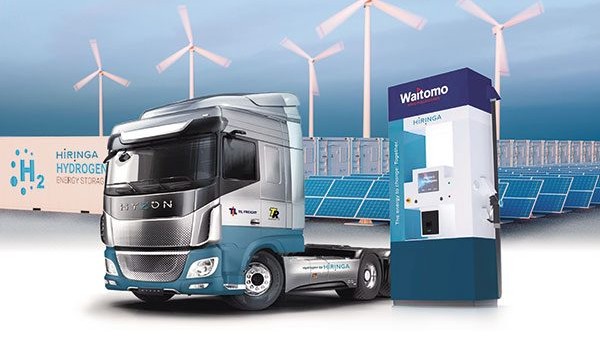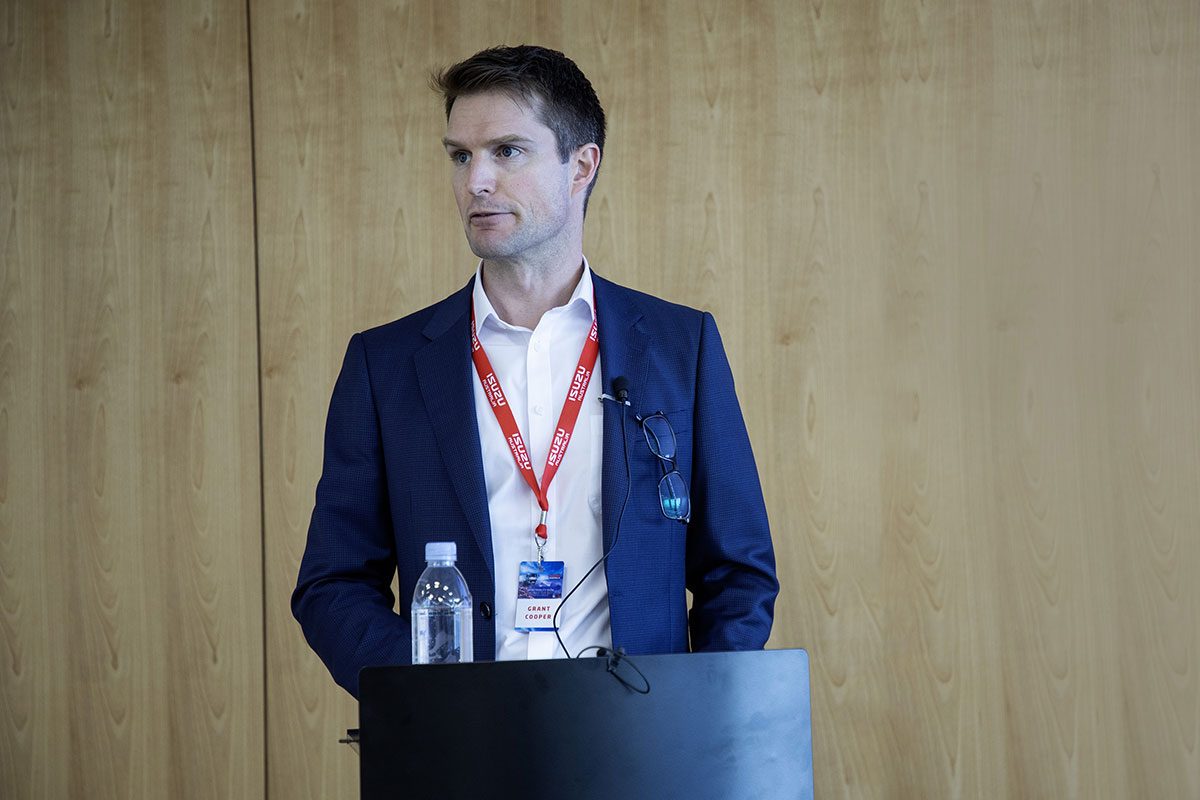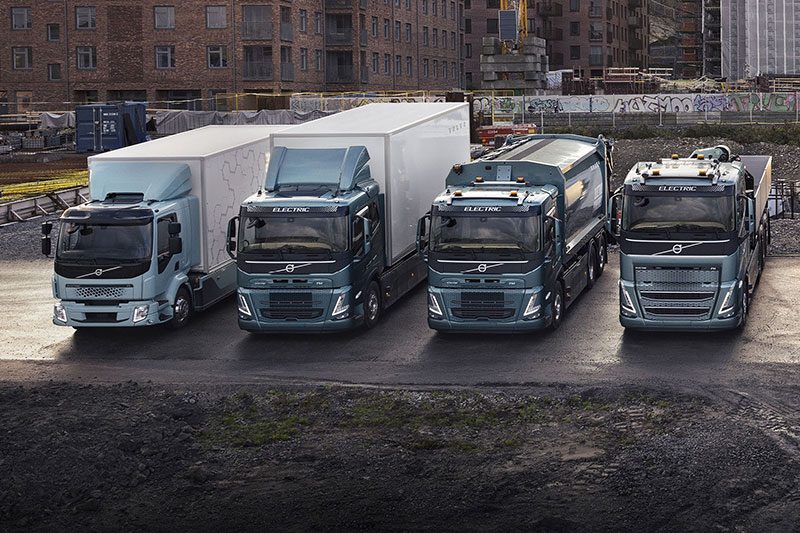
With the Climate Change Commission’s advice to the government putting the spotlight on transportation emissions, it is the perfect time to look deeper into how green hydrogen for transport – heavy vehicles in particular – will play an important role in New Zealand’s energy puzzle. The first of a three-part series by Hiringa Energy.
Hydrogen fuel-cell electric vehicles (FCEVs) use the same electric drive train as battery electric vehicles (BEVs), and when using green hydrogen, are also powered by renewable electricity. We are encouraged to see that the Climate Change Commission (CCC) now includes both in its overarching definition of an electric vehicle. This is helpful, given electrification is understood as a critical aspect of Aotearoa’s path to decarbonisation.
Hiringa Energy is especially pleased to see its recommendation that the government should encourage the production and use of low-emission fuels such as hydrogen to build the foundation for the ramp-up of zero-emission freight in the medium term. We commend the CCC on its work to date and acknowledge its open engagement throughout the development of its advice to the government.
For those new to hydrogen fuel-cell electric trucks, they are a lighter zero-emission option that refuel in a similar amount of time as a diesel equivalent and have a range of up to 650km. Hiringa CTO Dan Kahn explains it well in a recent article ‘What the RUC’ in Pure Advantage (https://pureadvantage.org/ what-the-ruc/).
A critical decarbonisation tool, ready now
Today’s green hydrogen technology changes heavy freight from a ‘hard-to-treat’ sector to a ‘low hanging fruit’ for New Zealand. Hiringa has been working with the government and industry to establish the production of green hydrogen at scale to create a nationwide hydrogen refuelling network aligned with the structured rollout of commercial and heavy zero- emission hydrogen FCEVs. This initiative will kickstart the decarbonisation of the country’s heavy-vehicle fleet, beginning in 2022.
Every linehaul diesel truck the industry replaces with zero-emission technology can remove the equivalent of approximately 150 cars’ worth of CO2 emissions. With heavy freight contributing 25% of our transportation emissions, this is a win for New Zealand that is already in train.
Figure 1 highlights the opportunity to abate transportation emissions in the heavy-vehicle sector using today’s hydrogen technology.

Replacing the heaviest, highest- kilometre vehicles emitting the most CO2 has the highest impact
Modelling is a very useful tool when trying to understand how best to tackle heavy-transport emissions. However, we need to be careful if we base assumptions on applying averages. For example, an ‘average truck’ based on the 2010 Ministry of Transport dataset and often used in analysis travels approximately 27,000km per year, with a GVM of 19.5t. However, this approach fails to account for the actual emissions of the different truck sub-classes and the actual lifecycle of a truck.
A new truck typically enters the fleet at the high end of kilometre service and/ or payload where it can be commercially justified. It then generally goes through three ‘lives’ with disproportionately high kilometres and emissions in its first ‘life’, as depicted in Figure 2.

When emissions are accounted for, a very different pattern emerges, as depicted in Figure 3.
More than 80% of heavy- trucking transport emissions originate from trucks that are heavier and drive further than the ‘average truck’.
Converting an ‘average’ heavy truck to zero-emission technology would only address less than 20% of a truck’s lifetime emissions.
A heavy-trucking decarbonisation strategy should introduce new zero- emission vehicles in the first life and leverage the ‘trickle- down’ effect.
With the bulk of a truck’s emissions being produced in its first and second life, this is the place to focus our energy and replacing our heaviest fleet with hydrogen FCEV, will provide the best ‘bang for buck’.

Food for thought in relation to the government feebate scheme
The government’s feebate scheme will have a positive impact on increasing the uptake of zero-emission passenger vehicles, assuming New Zealand can access enough of the vehicles in an already constrained international market.
It is worth noting that, if a feebate system were applied to heavy trucks calculated on the actual reduction in carbon emissions, a typical linehaul truck should be eligible to receive CAPEX support of well over $800,000. This amount is beyond what the sector will need, however – even 30% of this would make a material difference to accelerating the introduction of these vehicles.
National low- emissions freight strategy
During the consultation phase, the CCC heard about the great work already underway within the freight sector to reduce emissions, such as efficiency gains and greater use of technology such as biofuels and green hydrogen. As a result, the CCC recommends developing a national low-emissions freight strategy that establishes the investment settings and infrastructure required to deliver a low-emissions freight system. We think this is a great idea and builds nicely on the Ministry of Transport’s Green Freight Project, kicked off in 2019, and we encourage all stakeholders to get involved and add value.
Developing low- carbon fuel markets
In addition to a national low- emissions freight strategy, there were some other key recommendations of note within the CCC advice, being:
• A low-carbon fuel standard or mandate to increase demand for low-carbon fuels;
• Supporting demonstration and pilot projects for low- carbon heavy vehicles; and
• Offering targeted support for the uptake of low- carbon heavy vehicles, e.g. broadening the RUC exemption of BEVs to include other low-carbon technologies.
 A visual comparison between diesel, hydrogen and current battery electric trucks.
A visual comparison between diesel, hydrogen and current battery electric trucks.
The decade to invest in green hydrogen
When considering the options for decarbonising heavy freight, we need to deploy all practicable technologies. We find that some people are expecting one technology to be the answer – the silver bullet for all freight tasks across the transport network. The reality is that there are three technologies in line to decarbonise heavy transport in New Zealand: hydrogen, battery-electric and biofuels. All of these fuels have shortcomings compared with the status quo of diesel, which is an incredibly versatile fuel, so they will need to be deployed where they work best.
For batteries, it’s the metro and return-to-base tasks, where the weight, range and charge times aren’t going to encumber productivity.
For biofuels, which can only ever be produced in limited quantities in New Zealand, it’s the existing legacy fleet of trucks – those that are being road- registered today and will still be on the road (albeit in a reduced capacity) in 2040.
For hydrogen, it’s linehaul and HPMV operations, where uptime and payload are critical in keeping the economy moving.
We see all these technologies working in synergy. However, because hydrogen is replacing the highest emitting portion of the heavy fleet, it is important that deployment begins in earnest now and is fully ramped up by 2025.
Heavy hydrogen FCEV truck commercial pilots will begin in early 2022 in New Zealand. The capital cost reduction of FCEV trucks is following a typical technology commercialisation pathway. To help manage the introduction of the technology, Hiringa has partnered with TR Group to introduce fuel-inclusive FCEV truck leases in rated combinations between 38t and 58t, providing ranges from 400km to 650km, with comparable payloads and refuelling times to diesel equivalents.
Multiple other local industry stakeholders are also making progress in this space, collectively helping to lay the foundation for the ramp-up of zero-emission freight in the medium term.
Heavy-fleet turnover will take several decades, with New Zealand only purchasing around 6500 heavy vehicles each year. Even if we purchased zero-emission trucks from now on, it would take more than 20 years to transition the heavy fleet. Encouraging a rapid increase in zero- emission heavy-vehicle uptake is critical and needs to start now if we are to meet our net-zero target.
We look forward to working with heavy transport industry stakeholders and the government to decarbonise this ‘low hanging fruit’ sector and get some early ‘runs on the board’ regarding emissions reductions.
Dion Cowley is project development and public sector lead at Hiringa Energy.
Read more
Road to Zero Isuzu styles
0 Comments6 Minutes
Ready for the harvest
0 Comments12 Minutes
VGA introduces electric
0 Comments8 Minutes
Celling’ the future
0 Comments14 Minutes





